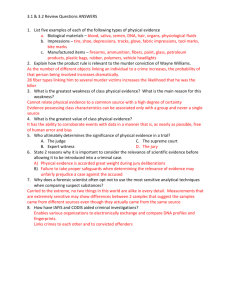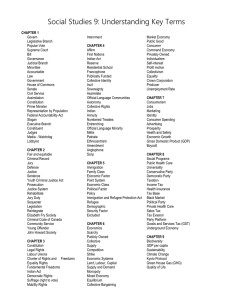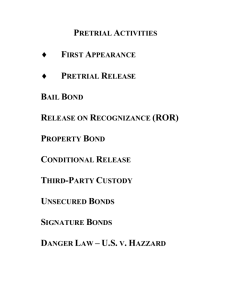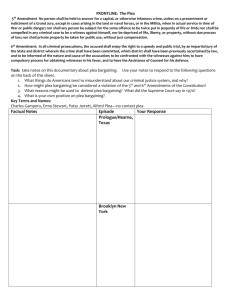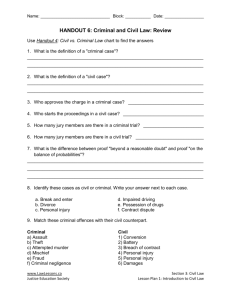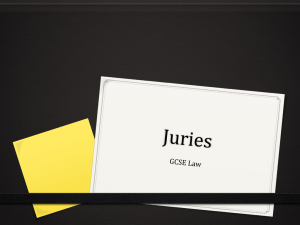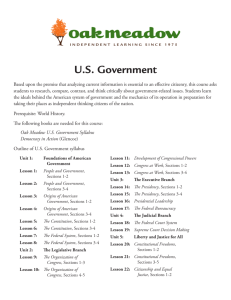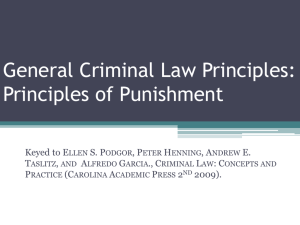Exam Review
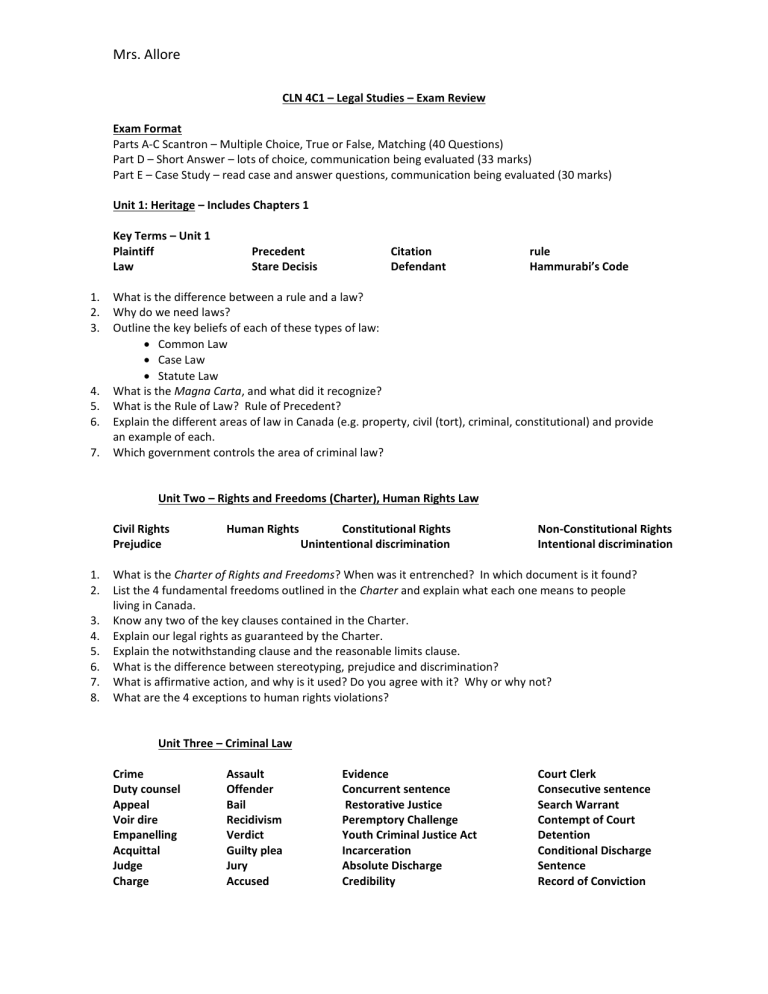
Mrs. Allore
CLN 4C1 – Legal Studies – Exam Review
Exam Format
Parts A-C Scantron – Multiple Choice, True or False, Matching (40 Questions)
Part D – Short Answer – lots of choice, communication being evaluated (33 marks)
Part E – Case Study – read case and answer questions, communication being evaluated (30 marks)
Unit 1: Heritage – Includes Chapters 1
Key Terms – Unit 1
Plaintiff
Law
Precedent
Stare Decisis
Citation
Defendant rule
Hammurabi’s Code
1.
What is the difference between a rule and a law?
2.
Why do we need laws?
3.
Outline the key beliefs of each of these types of law:
Common Law
Case Law
Statute Law
4.
What is the Magna Carta, and what did it recognize?
5.
What is the Rule of Law? Rule of Precedent?
6.
Explain the different areas of law in Canada (e.g. property, civil (tort), criminal, constitutional) and provide an example of each.
7.
Which government controls the area of criminal law?
Unit Two – Rights and Freedoms (Charter), Human Rights Law
Civil Rights
Prejudice
Human Rights Constitutional Rights
Unintentional discrimination
Non-Constitutional Rights
Intentional discrimination
1.
What is the Charter of Rights and Freedoms? When was it entrenched? In which document is it found?
2.
List the 4 fundamental freedoms outlined in the Charter and explain what each one means to people living in Canada.
3.
Know any two of the key clauses contained in the Charter.
4.
Explain our legal rights as guaranteed by the Charter.
5.
Explain the notwithstanding clause and the reasonable limits clause.
6.
What is the difference between stereotyping, prejudice and discrimination?
7.
What is affirmative action, and why is it used? Do you agree with it? Why or why not?
8.
What are the 4 exceptions to human rights violations?
Unit Three – Criminal Law
Crime Assault Evidence
Duty counsel
Appeal
Voir dire
Empanelling
Acquittal
Judge
Charge
Offender
Bail
Recidivism
Verdict
Guilty plea
Jury
Accused
Concurrent sentence
Restorative Justice
Peremptory Challenge
Youth Criminal Justice Act
Incarceration
Absolute Discharge
Credibility
Court Clerk
Consecutive sentence
Search Warrant
Contempt of Court
Detention
Conditional Discharge
Sentence
Record of Conviction
Mrs. Allore
Parole
Hung jury
Motive
Plea Bargain
Information
Conviction
Euthanasia
Arraignment
Aiding
Voir dire
Charge to Jury
Justice of the Peace
Onus/reverse onus
Dangerous Offender
Abetting
Disclosure
Concurrent Summation
Consecutive
1.
Why do we need criminal laws?
2.
What are the five main functions of law?
3.
What is the Criminal Code, and what purpose does it serve?
4.
Define and give an example of an indictable, summary and hybrid offence.
Bawdy house
Privileged communication
Diversion Programs
Accessory After the Fact
Preliminary Hearing
Adversarial system
5.
What are the maximum and minimum sentences and fines for indictable and summary offences?
6.
Define Actus Reus and Mens Rea. What is the difference between the two?
7.
How many classes of murder does Canada recognize? (i.e. first degree)
8.
What is the difference between murder and manslaughter?
9.
Abortion, Prostitution and Firearms laws are often debated by the public and in Parliament. Why is this so? What points are so controversial?
10.
Where does the law currently stand with the decriminalization of marijuana and euthanasia? Should these actions be considered illegal? Why or why not?
11.
Which federal statute concerns the use of drugs in Canada?
12.
Describe the crimes of possession and trafficking of illegal drugs (controlled substances).
13.
Explain our legal rights (as guaranteed in the Charter):
when being detained when being arrested
when being searched
14.
What is a plea bargain? What are some advantages and disadvantages of plea bargaining?
15.
Briefly outline the advantages and disadvantages of: trial by judge alone; trial by judge and jury.
16.
Briefly describe who is (and who is not) eligible for jury duty.
17.
Who sentences the convicted person in a jury trial?
18.
What types of evidence are most reliable? Least reliable?
19.
If a witness fails to show up to give evidence, what might occur?
20.
Describe two forms of physical evidence used in criminal investigation. How could they potentially be misleading?
21.
What is a defence? How is a defence introduced and utilized in court? What are the two categories of defences? How can they be used successfully in court?
22.
What are the four main goals of sentencing?
23.
What are 5 types of sentencing options available in the Canadian Justice system?
24.
What are diversion programs? Provide two advantages and two disadvantages of diversion programs.
Which program do you think is most effective and why?
25.
How have the changes in the attitudes and values of society brought about changes in criminal law.
26.
What does it mean to appeal a judicial decision? When can one appeal a judicial decision?
EXAM DATE: THURSDAY, JANUARY 22, 2015
TIME: 9:00-11:45 AM
GOOD LUCK!
